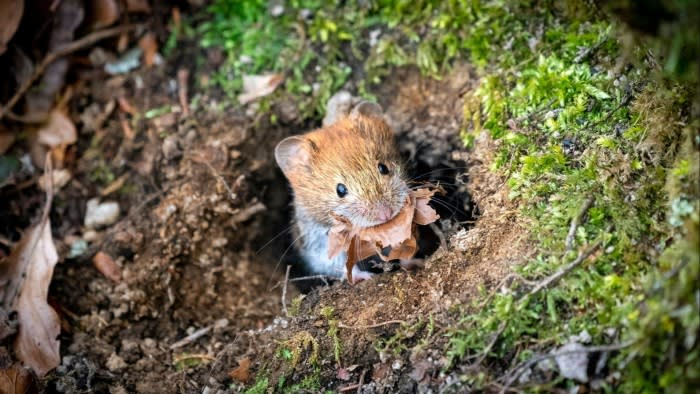Unlock the Editor’s Digest for free
Roula Khalaf, Editor of the FT, selects her favourite stories in this weekly newsletter.
Fears about climate change often coalesce around the prospect of catastrophic weather events, such as wildfires or floods. But the warming of the planet is delivering another equally alarming threat to human health and wellbeing. Diseases once limited to particular parts of the world are spreading to new regions, threatening populations that have no inbuilt immunity.
Meanwhile, the impact of global warming is forcing animals and humans to seek out new habitats, bringing them into closer proximity and creating conditions for the spread of zoonotic diseases, which occur when pathogens jump from an insect or animal to a human.
“When we talk about links between climate change and human health, the most obvious thing is extreme heat, and extreme weather events,” says Alan Dangour, head of climate and health at the Wellcome Trust in the UK. “But, then, there are also these pathways between climate change and human health that are mediated by ecosystems, by nature . . . That link between climate change and infectious disease is very real.”
The numbers tell their own story. Sir Alimuddin Zumla, a professor of infectious diseases at University College London Medical School, has warned that the number of new infectious diseases with epidemic potential has increased nearly fourfold over the past six decades. In an article in The Lancet, in 2021, he noted that the number of new outbreaks per year had more than tripled since 1980.
Dangour highlights the spread of mosquito-borne diseases such as dengue and malaria into new regions, testament to the insects’ ability to survive and thrive in parts of the world where the climate would once have been too temperate.
Incidence of dengue has increased 30-fold in the past 50 years, according to the World Health Organization. A major dengue outbreak in France last year, and another in Greece, underlined how these diseases were moving far beyond the areas in which they had been indigenous, Dangour suggests, although strong reporting networks have thus far allowed quick action to tackle the outbreaks. “We have very good surveillance systems in high-income countries,” he points out. “So we’re able to detect [and] respond to those outbreaks.”

As humans are forced to adapt to climate change, they are also moving into new areas: encroaching into previously wild habitats in search of food and livelihoods, making “spillover” events — when a virus moves from animals into people — far more likely.
“In poor countries, if you can’t farm because of extreme weather, extreme heat, you’re more likely to forage and, as soon as you do that, and you go into forests . . . you come into contact with more wildlife and that increases infectious disease risks,” Dangour explains.
This year, a man died from Alaskapox in the northern US state, the first known human fatality from the disease, thought to be spread by mammals such as red-backed voles and shrews.
Raúl Rivas-González, a microbiologist at the University of Salamanca in Spain, says the virus, part of the orthopox family, was discovered in 2015 and “the evidence so far indicates that it is present in several species of small mammals”. Viruses constituted about two-thirds of all new human pathogens and, of the viruses known to infect humans, about 80 per cent occur in wildlife, he adds.
Although available data suggests that the public health impact of Alaskapox virus is restricted to the Alaska area, the worry is that the emergence of new orthopox viruses with zoonotic potential could cause “global incidents”, Rivas-González warns.
He notes the most high-profile recent example of a disease occurring far beyond the regions in which it is normally found is mpox, formerly known as monkeypox. Since May 2022, there have been more than 94,000 confirmed cases and over 180 deaths in 117 countries.

Another key question for infectious diseases experts is how the biology of viruses and pathogens is changing as they emerge in new regions of the world.
Dangour says a series of evidence reviews has suggested that “more than 50 per cent of known human pathogens tend to become more virulent as a result of climate change, because of the changing weather patterns and temperatures”.
But, while long-term changes in climate cannot easily be undone, measures can be taken to mitigate associated infectious disease outbreaks, says William de Souza, assistant professor in the department of microbiology, immunology and molecular genetics at the University of Kentucky.
He works on the discovery of potential emerging viruses, and highlights an approach being taken by the World Mosquito Program. It has injected a bacteria, Wolbachia — which lives in the cells of half of all insects — into the eggs of mosquitoes from the aedes aegypti family, which transmit viruses such as dengue. The bacteria does not naturally occur in these mosquitoes and introducing it prevents further transmission of the virus as Wolbachia is passed down to each successive generation of insects, without the need for further injections.
Secondly, says De Souza, affordable vaccines must be made available to treat populations in which diseases are now becoming endemic.
Above all, the rise of zoonotic diseases must be viewed and tackled as a global concern, requiring a global solution, he argues. “When you look at the timeline, this problem has become worse every year. We need to act fast because the diseases are pretty fast, too.”
Climate Capital

Where climate change meets business, markets and politics. Explore the FT’s coverage here.
Are you curious about the FT’s environmental sustainability commitments? Find out more about our science-based targets here


